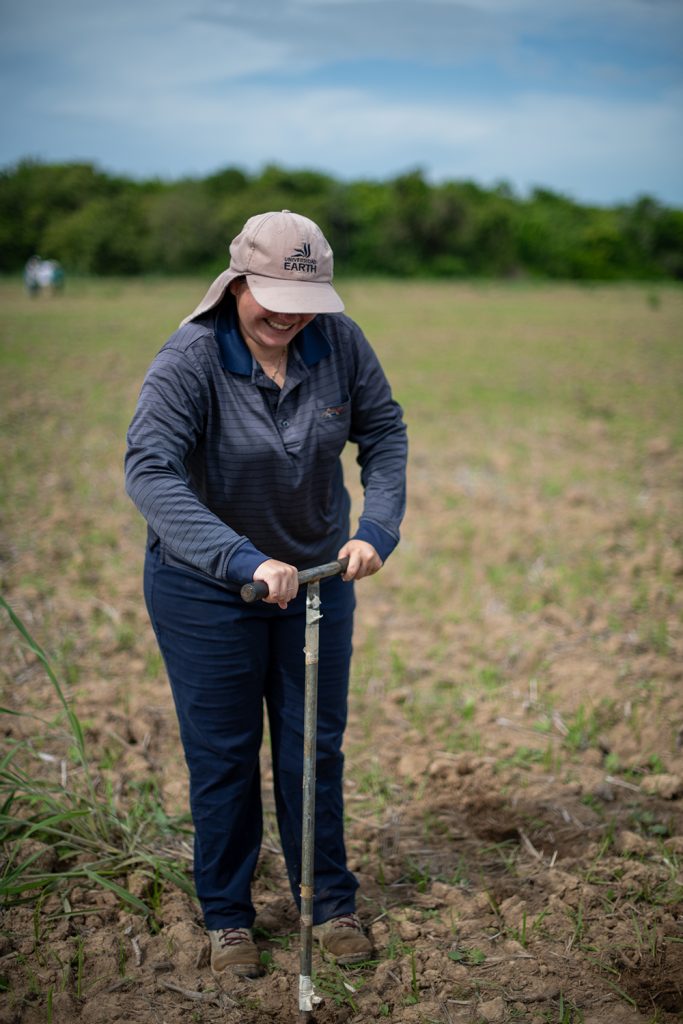At the Daniel Oduber Quirós Campus, located in the Dry Tropics of the Guanacaste province of Costa Rica, a group of students is spread over a patch of land that seems arid but is full of life. For the purpose of carrying out a soil study, they carry various instruments used in precision agriculture. Their task is to discover what the area needs to achieve efficient production in grass cultivation for hay baling.


Using a GPS system that has already marked the locations for completing the analysis and mapping the soil, the students strategically position themselves at different locations on the land and move carefully to the next location where they need to take measurements. This entire process provides crucial information that improves decision-making for producers, aiming to optimize agricultural operations and increase crop efficiency and profitability.
Johan Perret, Professor of Tropical Soils Management, shows his third-year students how to use each instrument and explains that, ideally, soil study and analysis is a task that should be carried out during agricultural planning so that farmers can know if it is necessary, for example, to perform a subsoiling process, where the soil is “broken down” to reduce compaction and improve drainage.
These agricultural practices can be costly in terms of time and money. Having precise information about where and at what depth subsoiling is needed can generate significant savings for producers.

Precision agriculture focuses on managing soil variability within the same plot of land. With the use of technologies like GPS and TDR (a moisture sensor), farmers can identify areas with different soil characteristics, such as silicate content or moisture retention. This information allows adjusting practices such as irrigation, fertilization, and planting density specifically for each zone.
Soil analysis also includes evaluating key parameters like pH and fertility. A high pH may indicate the need for specific adjustments in fertilization, such as using ammonium sulfate to lower the pH and improve the availability of nutrients like iron and boron. Proper fertilization planning is essential as it represents a significant portion of the total agricultural operation cost.

At EARTH, it is essential for students to have access to this knowledge and these tools so that, upon graduation, they can apply the latest innovations and technologies to improve global agricultural practices, optimize the use of natural resources, and expand the profitability of crops on which entire families and communities depend.

EARTH also promotes the democratization and access to this type of technology, which was the driving force behind creating the Precision Agriculture Center (CAP). According to Professor Perret, CAP functions as “a library of tools for small- and medium-scale producers.” Through CAP and various EARTH Futures projects, our University has advised thousands of farmers in ways to improve their production.
